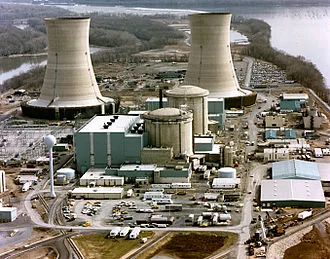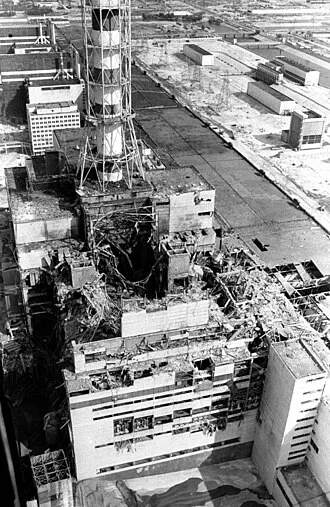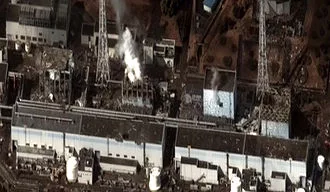Table of Contents
Chemical disasters, much like natural calamities, are catastrophic events, but they result from human activities and the interference of hazardous chemicals. They’re marked by the uncontrolled release of a substance that poses a significant risk to people and the environment. This might include toxic gas leaks, chemical spills, fires, or explosions involving hazardous materials. Understanding these disasters requires a look not just at the chemistry, but also the human, technical, and organizational errors that often lead to them.
The infamous Bhopal disaster is often mentioned when discussing chemical disasters. Back in 1984, a pesticide plant in Bhopal, India, exposed half a million people to methyl isocyanate gas, leading to thousands of deaths and disabilities. This tragic event, along with the explosion at Chernobyl, serves as a stark reminder of the potential reach of chemical disasters. Both cases highlight the importance of robust safety measures and regulatory oversight.
Chemical disasters differ from other emergencies like natural disasters since they’re often preventable. While hurricanes or earthquakes can’t be controlled, chemical disasters often result from avoidable oversights. That’s why understanding human roles and technical failings is vital. Equipment failure, lack of monitoring, and poor training usually lie at the heart of such tragedies.
Certain chemicals notoriously involved in these disasters possess unique properties. For instance, methyl isocyanate is highly toxic and volatile, contributing to its devastating effects in Bhopal. Similarly, radioactive elements in nuclear disasters have lasting impacts due to their prolonged radioactive effects. Recognizing these properties can help in formulating better safety protocols.
In unraveling the anatomy of chemical disasters, it’s clear that a cocktail of factors—ranging from chemical properties to human errors—contribute to their occurrence. By studying past events, identifying causes, and understanding chemical properties, we can move toward preventing future incidents.
Historical Case Studies
The nuclear accidents at Fukushima, Chernobyl, and Three Mile Island had far-reaching and diverse impacts, affecting not only the immediate environment and populations but also public perception and the future of the nuclear industry.
1. Three Mile Island (TMI), USA (1979):

- Accident: A partial meltdown of the reactor core in Unit 2 occurred due to a combination of equipment malfunction and operator errors.
- Radiological Impact: A small amount of radioactive gas was released, but studies concluded it was not enough to cause adverse health effects on the surrounding population.
- Health Impact: While initial reports suggested no health consequences, follow-up studies indicated potential for increased anxiety and stress among residents, particularly mothers of young children.
- Nuclear Industry Impact: TMI led to significant improvements in safety regulations, operator training, and emergency response planning within the U.S. nuclear industry. It also contributed to a decline in public confidence and a slowdown in new nuclear power plant construction.
2. Chernobyl, Ukraine (1986):

- Accident: A flawed reactor design and inadequately trained personnel led to a steam explosion and fire, releasing significant amounts of radioactive material into the environment.
- Radiological Impact: Radioactive materials spread across large parts of Europe, contaminating agricultural land, forests, and waterways.
- Health Impact:
- Acute effects: Two workers died in the initial explosion, and 28 others died from acute radiation syndrome within a few weeks.
- Long-term effects: There has been a significant increase in thyroid cancers, especially among those exposed as children or adolescents due to radioactive iodine fallout.
- Psychological effects: Mental health impacts, including anxiety and stress, are considered one of the most significant public health consequences of the accident, affecting both residents and cleanup workers.
- Environmental Impact: Large areas were contaminated, leading to restrictions on agricultural and forest production, and impacting wildlife within the exclusion zone.
- Political and Social Impact: The accident contributed to public distrust in government and the Soviet system and triggered major changes in nuclear safety culture and international cooperation.
3. Fukushima Daiichi, Japan (2011):

- Accident: A massive earthquake and tsunami caused a loss of power and cooling to the reactors, leading to meltdowns and the release of radioactive material into the atmosphere and ocean.
- Radiological Impact: High levels of radioactive material were released, leading to the evacuation of over 150,000 people and decontamination efforts.
- Health Impact:
- Direct radiation effects: No deaths or radiation sickness were directly attributed to the accident.
- Secondary effects: Evacuation and relocation caused significant mental and physical harm, including increased mortality among the elderly and a rise in chronic diseases and mental health issues.
- Environmental Impact: Contamination of land and water continues to require ongoing monitoring and cleanup efforts.
- Economic Impact: The accident led to significant costs for decommissioning, decontamination, and compensation, as well as a short-term negative impact on the local economy.
- Global Impact: The Fukushima disaster highlighted the importance of preparing for and responding to natural disasters impacting nuclear facilities and led to increased awareness and preparedness for radiation emergencies globally.
Factors Leading to Chemical Accidents
Understanding what causes chemical accidents is crucial in preventing them. One major culprit often lies in human error. It might look like a simple mistake, but in industries dealing with hazardous chemicals, even a tiny slip can have catastrophic consequences. This could involve incorrect handling, improper maintenance, or even neglecting safety protocols. It’s surprising how often lapses in judgment or miscommunication can lead to major industrial accidents.
Equipment malfunction is another significant factor. Machines and tools wear out or break down over time, especially in environments where chemicals are in use. If not serviced or replaced regularly, these malfunctions can spark disasters. Routine checks and comprehensive maintenance schedules are critical here. Ignoring this can lead to dire outcomes, as any failure can escalate quickly when hazardous chemicals are involved.
Environmental conditions can also trigger or worsen chemical accidents. Natural events like floods or earthquakes don’t just pose direct risks; they can also cause chemicals to spill or mix dangerously. Factories situated in areas prone to such natural disasters need to have contingency plans. Understanding geographical and environmental factors in plant locations is as important as the chemicals they work with.
Another layer of complexity comes with insufficient training and poor safety practices. Workers and staff need to operate with a keen awareness of safety protocols. Regular training sessions and drills ensure that everyone knows exactly what to do in case something goes wrong. Demonstrating this commitment to safety can reduce the likelihood of human error and equipment failure.
Taking examples from past incidents can shed light on these causes. Recall how poor safety checks led to the disastrous events at the AZF chemical plant in France in 2001. By using historical case studies as learning tools, industries can take proactive steps in curbing potential threats. Striving for a culture that values continuous learning and vigilance becomes non-negotiable in minimizing chemical disasters.
The Immediate Consequences on People and the Environment
Chemical disasters unleash a cascade of immediate consequences that ripple through communities and environments. The health effects on those exposed are often severe, ranging from respiratory issues to neurological damage, and in worst-case scenarios, death. Survivors may face chronic health problems due to exposure to toxic substances. The Bhopal disaster, for instance, left many with persistent illnesses long after the incident.
The environment bears a heavy brunt as well. Chemical spills can lead to significant soil and water contamination, affecting agriculture and water supplies. Contaminated rivers and land disrupt ecosystems, killing plants and animals and sometimes causing long-term ecological changes. Restoring these natural resources is a painstaking process that can take years or decades, requiring both time and substantial financial investment.
Communities may experience displacement as areas become unsafe for habitation. Economic repercussions are inevitable when livelihoods tied to affected land and water are lost. Businesses shut down, and property values plummet. The societal fabric is often torn as communities struggle with the overwhelming task of rebuilding lives from scratch.
Visualizing these consequences helps drive the point home. Real-life imagery and firsthand accounts from incidents like Fukushima or Three Mile Island provide a stark perspective on the impacts. These stories aren’t just statistics; they’re narratives of communities grappling with fear, loss, and recovery.
These immediate effects underline the significant need for swift response and effective communication during such disasters. Knowing what to expect in terms of health and environmental impact can guide better preparation and response strategies. In analyzing past disasters, our focus should lie in understanding these impacts to reduce the damage from future incidents.
Ensuring Preparedness and Response Strategies
In facing chemical disasters, preparedness isn’t just optional; it’s a safeguard against chaos. Governments and international bodies play a pivotal role in this aspect by establishing guidelines and regulations. Their involvement ensures standardized practices across industries handling hazardous materials, creating a safer environment for everyone involved.
Emergency response planning is all about readying a robust action plan before disaster strikes. This involves identifying potential risks, setting up an effective communication system, and executing regular drills. These proactive measures ensure that when a disaster occurs, responses are swift and organized. Recent developments in real-time monitoring technology and automated alert systems have significantly bolstered these efforts.
Community involvement cannot be overstated. Local populations are usually the first impacted and can be powerful allies in preparedness efforts. Public education campaigns and training can equip citizens with the knowledge and tools to react appropriately in an emergency scenario. Engaging communities in planning exercises fosters resilience and a shared sense of responsibility.
Technological advancements have transformed the landscape of disaster management. Early warning systems powered by AI and data analytics help predict possible incidents by identifying patterns that could lead to failures. These technologies empower industries to take precautionary measures, averting incidents before they escalate into full-blown disasters.
Drawing from real-world experiences, it becomes clear that preparedness is not solely the responsibility of experts and officials. Individuals and communities play a critical role in ensuring readiness. Equipped with the right knowledge and practices, they form the first line of defense against potential disasters. Emphasizing collective action leads to a more effective response when every second counts.
The Path Forward – Mitigation and Policy Improvements
Learning from past chemical disasters presents an opportunity for significant improvements in safety policies and practices. A key takeaway is the importance of strong, enforceable legislation that covers every aspect of chemical handling. Following major incidents, many countries have revamped safety protocols and enhanced regulations to prevent recurrence.
Policy improvements often arise from the scrutiny that follows a disaster. These new regulations aim to address identified shortcomings and focus on stricter safety standards, better monitoring, and more transparency in industrial operations. Industries are increasingly required to adopt advanced technologies and invest in smarter infrastructure to manage risks.
Beyond legislation, there is a pressing need for innovative solutions aimed at mitigating environmental damage from chemical disasters. Techniques such as bioremediation—using microorganisms to clean up contaminated sites—are gaining traction. Embracing such methods can accelerate recovery and prove more sustainable than traditional cleanup strategies.
Research plays a crucial role in driving innovation and understanding complex chemical interactions. Ongoing studies focus not just on prevention, but also on limiting the extent of damage from unforeseen events. Investing in research means expanding our arsenal of tools and knowledge to combat the adverse effects of potential disasters.
In looking ahead, creating a culture of safety and continuous improvement in the chemical industry is paramount. By integrating lessons learned and maintaining vigilance, industries can forge a safer path that protects people and preserves the environment for future generations.

This is a crucial topic that often gets overshadowed by more sensational disasters. The Bhopal tragedy is a haunting reminder of the human cost of negligence and the need for stringent safety protocols in industries dealing with hazardous materials. It’s alarming to think that many chemical disasters are preventable with the right oversight and training. By learning from these past events, we can advocate for better regulations and promote a culture of safety that prioritizes both human lives and environmental health.
This was such a thought-provoking read. The section on Preparedness and Response Strategies really stood out to me, especially the emphasis on community involvement. It’s a powerful reminder that disaster readiness isn’t just the job of emergency personnel — it’s something we all have a role in.
I wonder how many local communities actually hold regular drills or educational programs on chemical disaster response. It seems like awareness and preparation at the neighborhood level could make a huge difference in minimizing harm when every second counts.
Have you come across examples of communities that are doing this well? I’d love to learn more about practical ways to get involved or advocate for these kinds of efforts locally.
Hi Alice
You know, To my knowledge I haven’t really come across ANY Communities that are implementing this kind of community training. It would be helpful to be able to get communities engaged. I would think that we could go (Here in the States) to our local Mayor’s Office, Etc. It seems everybody is fixated on themselves and basically just trying to survive without any thought of these kinds of issues as people are dealing with finances and inflation in recent times. Funding seems to be a real issue as of late.